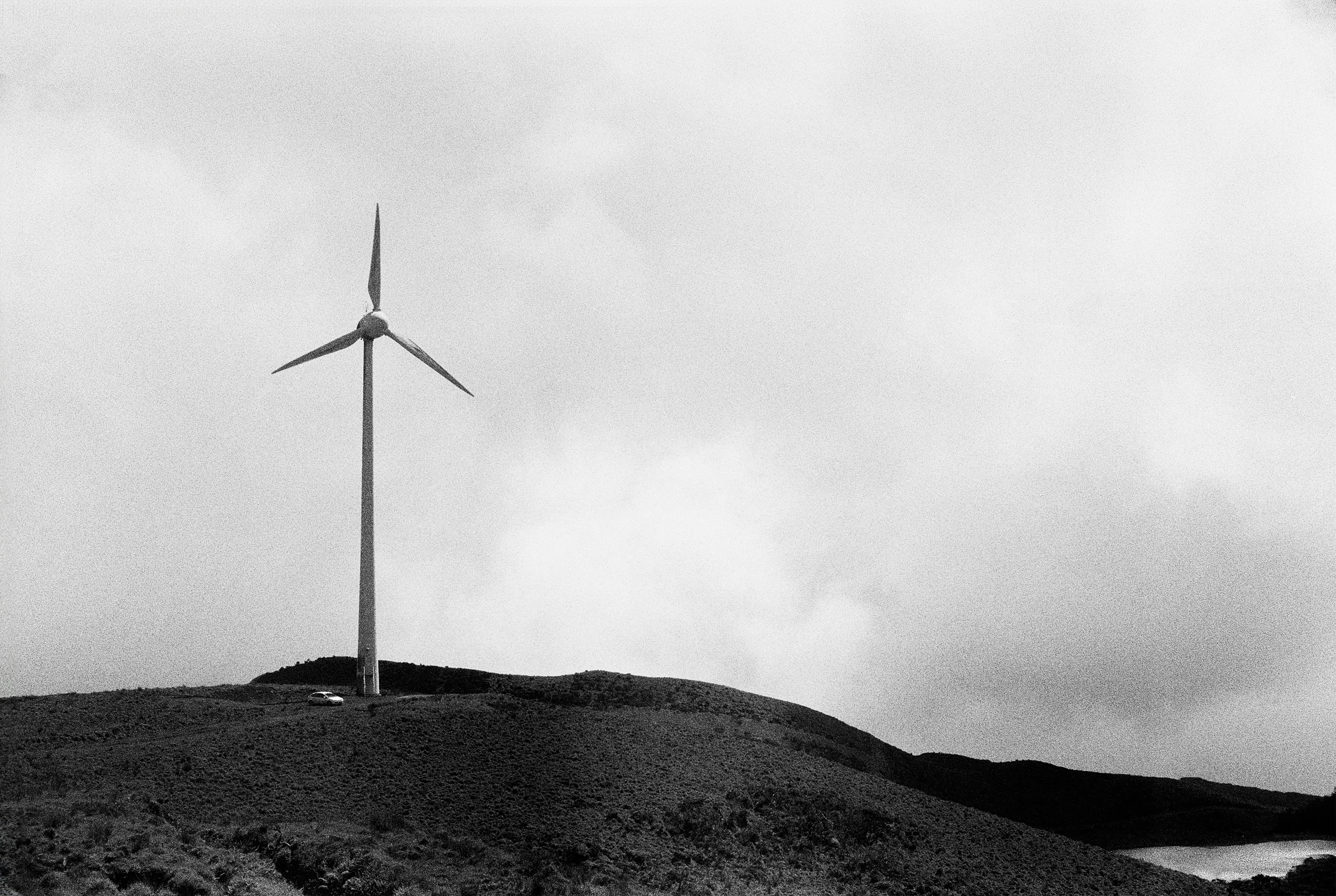In this compelling piece, our Transparent Ocean Research Fellow, Dr Junayed Hasan, unravels the renewable energy conundrum around what happens if it’s a grey day with no sun and no wind. He gets into his attention-grabbing storytelling mode, exposing how vulnerable we are as humans depending on the elements, but then points out the opportunities that AI, digital twins and machine learning can bring by simulating and preparing us for various scenarios, including the dreaded grey, windless days.
The first rule of my journey is: you do not talk about the grey days. The second rule is: you DO NOT talk about the grey days. But today, let's break that rule!
I moved to Aberdeen chasing the allure of the North Sea, leaving behind the sun-drenched coasts of Ulsan, South Korea. The city greeted me with its posh granite architecture, a palette of greys that matched the often-overcast skies. It was a stark contrast, yet the monochrome beauty held a certain elegance, a canvas waiting for new stories.
Growing up, they called me "Grasshopper," always leaping from one fascination to another. Poetry was my refuge then, words dancing like the rhythms I later found in data patterns and the ocean's ebb and flow. As a research scientist and AI engineer with over eight years immersed in data and machine learning, I've learned to find harmony in complexity.
Standing on the Aberdeen shore, I watched the wind turbines punctuating the horizon. Majestic giants harnessing the relentless North Sea winds - except today, there was no wind. The turbines stood still; blades frozen against the grey backdrop. No sun broke through the clouds to offer solar reprieve. It was a grey day with no wind, and the silence was deafening.
What happens when the elements we rely on decide not to play along?
In the North-East of Scotland, renewable energy isn't just a buzzword; it's the heartbeat of economic development. The clean energy sector here is booming, valued at £22 billion and projected to double to £46 billion by 2035. Over 140,000 people power this revolution, with offshore wind projects off the East Coast poised to inject billions into the economy and create tens of thousands of jobs.
Yet, days like this expose a vulnerability. The absence of wind and sun stalls energy production, reminding us that even the most advanced renewable technologies have limitations. Reliance on intermittent resources can strain the energy grid, potentially pushing us back toward fossil fuels to fill the gaps- a step backwards in our fight against climate change.
But every challenge is an opportunity in disguise.
Can clean energy solutions adapt to the whims of nature? Can AI and data help us bridge the gaps left by a windless, sunless day?
Absolutely.
Leveraging my background in AI and data science, I see the potential for technology to mitigate these challenges. Predictive analytics, powered by machine learning, can forecast weather patterns with remarkable accuracy. By anticipating days of low wind and sunlight, we can better manage energy storage and distribution.
Energy storage technologies, like advanced batteries and pumped hydro storage, act as reservoirs, capturing excess energy generated during peak conditions. AI algorithms optimise when and how to store this energy, ensuring that we have a buffer for days when nature doesn't cooperate.
Moreover, integrating diverse renewable sources reduces dependency on a single element. Tidal and wave energy, abundant in the North Sea, offer more consistent outputs. Aberdeen's strategic focus on harnessing these resources is driving significant investment, aligning with the UK's broader clean energy ambitions.
The UK's clean energy sector is not without its challenges - policy fluctuations and regulatory uncertainties can dampen investor confidence. Yet, the nation remains a global leader, ranked sixth worldwide for clean energy investment. The Energy Act 2023 aims to bolster this position, channelling up to £100 billion in private investment and supporting up to 72,000 jobs in sectors like carbon capture and low-carbon hydrogen.
So, what does all this mean on a grey day with no wind?
It means we adapt. We innovate.
At the National Subsea Centre, we've contributed over £3 million in research, tackling industry challenges with smart technologies to accelerate the energy transition. Our work in underwater machine vision, energy grid modelling, de-carbonised offshore energy and robust autonomous operations is creating unique capabilities that can handle the unpredictability of the elements.
AI plays a pivotal role here. By developing digital twins, virtual replicas of physical systems, we can simulate and prepare for various scenarios, including the dreaded windless days. These models help optimise operations, maintenance schedules and energy distribution, ensuring minimal disruption.
The clean energy revolution is not just about capturing what's readily available; it's about anticipating scarcity and turning it into abundance. It's about transforming data into actionable insights, making the invisible patterns of nature visible and manageable.
As I stand on the Aberdeen shore, the still turbines no longer seem like idle giants, but rather sentinels of progress, waiting for the next gust. The grey doesn't symbolise gloom but a challenge - a call to action for scientists, engineers and dreamers like me.
One day, when this journey winds down, I envision weaving these experiences into a film, a narrative that captures the tension between humanity's relentless pursuit of sustainability and nature's unpredictability. A story that begins on a grey day with no wind, echoing the introspective tone of Fight Club, delving into the psyche of a world in transition.
But until then, there's work to be done.
We must continue to push the boundaries of what's possible, blending science with creativity, much like the poetry I used to write. Finding rhythm in data patterns, harmony in technological advancements and beauty in the grey days.
Because even when the wind doesn't blow and the sun doesn't shine, the potential for innovation is limitless. And perhaps, just perhaps, the grey days are when we make the most significant strides forward.
"It's only after we've lost everything that we're free to do anything." - Fight Club
On these still, grey days, when nature takes a pause, we're given the freedom to rethink, to innovate and to propel the clean energy revolution forward.








